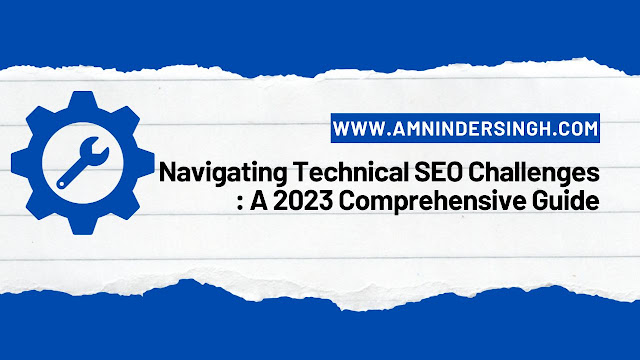Technical SEO is a critical aspect of search engine optimization that focuses on the behind-the-scenes elements of your website to improve its visibility in search engine results pages (SERPs).
In this comprehensive guide, we’ll explore the common technical SEO challenges that website owners and digital marketers face and provide practical solutions to overcome them.
Let’s Understand Technical SEO
Technical SEO refers to the optimization of the technical aspects of your website to improve its search engine rankings.
It focuses on factors such as website structure, code quality, load times, and mobile-friendliness.
Common Technical SEO Challenges
a. Indexation Issues
Challenge: Sometimes, search engines may not index all your web pages, leading to decreased visibility.
Solution: Create an XML sitemap, submit it to search engines, and use robots.txt to control what should and should not be indexed.
b. Crawl Errors
Challenge: Crawl errors can prevent search engine bots from accessing and indexing your content.
Solution: Regularly monitor Google Search Console (formerly Webmaster Tools) for crawl errors and address them promptly.
c. Duplicate Content
Challenge: Duplicate content across your website can confuse search engines and lead to ranking issues.
Solution: Implement canonical tags, 301 redirects, or use the rel=”nofollow” attribute to indicate the preferred version of content.
d. Site Speed and Performance
Challenge: Slow-loading pages can lead to a poor user experience and lower search engine rankings.
Solution: Optimize images, use browser caching, enable compression, and minimize server response times to improve site speed.
e. Mobile-Friendliness
Challenge: With the mobile-first indexing approach, websites must be mobile-friendly to rank well.
Solution: Ensure your site has a responsive design and performs well on mobile devices.
f. Structured Data Markup
Challenge: Implementing structured data (schema markup) can be complex, but it enhances your listings in search results.
Solution: Use Google’s Structured Data Markup Helper and test your markup with the Structured Data Testing Tool.
Solutions and Best Practices
a. XML Sitemaps
Create an XML sitemap that lists all your website’s pages and submit it to search engines. This helps search engine bots discover and index your content efficiently.
b. Robots.txt File
Use a robots.txt file to specify which parts of your site should be crawled and indexed. Ensure it’s configured correctly to avoid blocking important pages.
c. Canonical Tags
Implement canonical tags to indicate the preferred version of a page when duplicate content exists. This consolidates the SEO value to one URL.
d. Redirects
Use 301 redirects for permanently moved or deleted pages. This ensures that users and search engines are directed to the correct, updated URL.
e. HTTPS Implementation
Secure your website with an SSL certificate to enable HTTPS. Google considers HTTPS a ranking factor and provides a more secure browsing experience.
f. Mobile Optimization
Ensure your website is mobile-friendly and responsive. Google’s mobile-first indexing prioritizes mobile-optimized sites.
g. AMP (Accelerated Mobile Pages)
Consider implementing AMP for your content, especially if it’s news-related. AMP pages load almost instantly on mobile devices, enhancing user experience.
h. Schema Markup
Implement structured data (schema markup) to provide additional information about your content to search engines. This can lead to rich snippets in search results.
Tools for Technical SEO
Utilize tools like Google Search Console, Google PageSpeed Insights, Screaming Frog SEO Spider, and SEO platforms like Moz and SEMrush to diagnose technical issues and monitor your website’s performance.
Monitoring and Maintenance
Regularly monitor your website’s technical health using the tools mentioned above. Address issues promptly, update your site as needed, and stay informed about SEO best practices and search engine algorithm changes.
Let’s Conclude Technical SEO Challenges
Navigating technical SEO challenges is crucial for improving your website’s visibility and user experience. By understanding common issues and implementing best practices, you can ensure that your website is technically sound, ranks well in search engines, and delivers an excellent user experience.
Keep up with the evolving landscape of technical SEO to stay ahead in the digital marketing game.
This article is a part of our Search Engine Optimization (SEO) Module.
Module 4: Search Engine Optimization (SEO)
4.1 Understanding Search Engine Dynamics
4.2 Implementing On-Page SEO Techniques
4.3 Mastering Off-Page SEO Strategies
4.4 Navigating Technical SEO Challenges
4.5 Leveraging SEO Tools and Analytics

